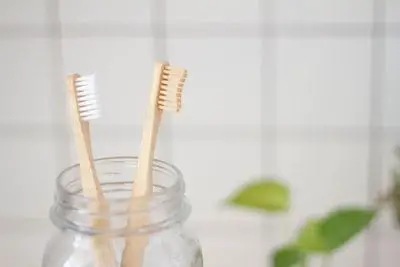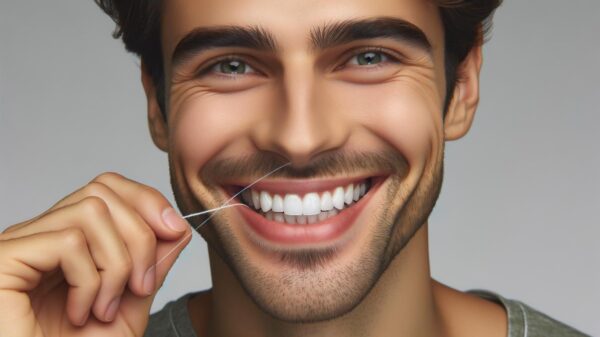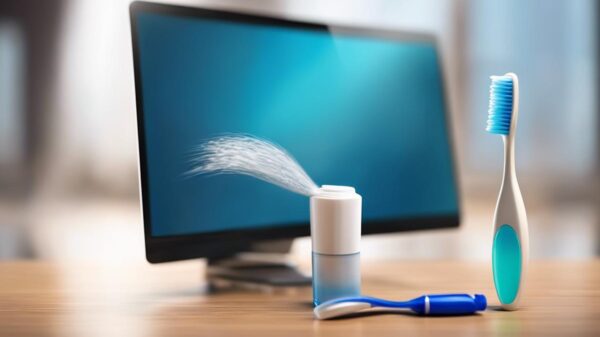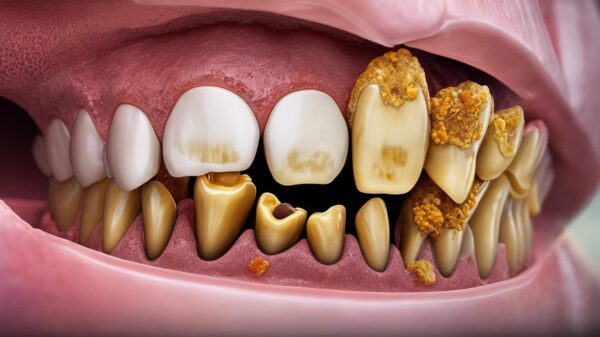How to Properly Store Your Toothbrush
Your toothbrush is one accessory you want to make sure stays clean. Many people cringe at the thought of using a dirty toothbrush or knowing that their toothbrush is being stored in a place where it can collect bacteria. Popular places to store a toothbrush is on the sink countertop, in the medicine cabinet behind your bathroom mirror, or on a shelf close to the sink.
So, how should you store your toothbrush? To properly store a toothbrush, find a cup or a holder that allows the toothbrush to sit upright. It’s best to store your toothbrush on the sink counter or on a shelve in the open that allows for the best airflow. If you store your toothbrush in a cabinet, the toothbrush may not be able to dry correctly and mold could form.
Brushing your teeth is not only a good practice of personal hygiene, but it is also one of the most beneficial things you can do to take care of your teeth. The last thing you probably want is a dirty toothbrush! Keep reading to learn proper procedures for storing your toothbrush!
Proper Procedures For Storing Your Toothbrush
Unfortunately, according to OnHealth.com, your toothbrush has more micro-organisms and bacteria on it than you can count. While this is disgusting, have you ever gotten sick from brushing your teeth? Probably not. The biggest danger that your toothbrush faces is mold. If you don’t store your toothbrush properly, mold can form. Here are the best procedures to practice for storing your toothbrush:
#1: Rinse Your Toothbrush Thoroughly After Use
Did you know you have bacteria in your mouth? Plaque is a bacteria that can slowly eat away at the enamel of your teeth. When you brush your teeth, your toothbrush is removing the plaque and other bacteria from your teeth, but now it’s stuck on your toothbrush.
To rid your toothbrush of excess bacteria and other particles it may have picked up during brushing, rinse it toothbrush thoroughly with water. This can help to wash away the things the bristles of your toothbrush managed to gather.
Tartar is another way bacteria can form on your teeth. When plaque isn’t removed properly from your mouth, it will calcify and turn into a hard substance that sticks to your teeth known as tartar. It can be difficult to remove tartar by just brushing your teeth. To have it effectively removed from your teeth, visit the best local dentist in the area.
#2: Rid Your Toothbrush of Excess Water
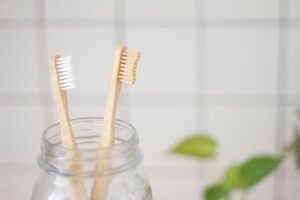 Once you have thoroughly rinsed your toothbrush, remove any excess water that may be caught in the bristles of the brush. To do this, tap your toothbrush against the side of the sink. While your toothbrush will still be damp after this, there won’t be standing droplets on your toothbrush’s bristles.
Once you have thoroughly rinsed your toothbrush, remove any excess water that may be caught in the bristles of the brush. To do this, tap your toothbrush against the side of the sink. While your toothbrush will still be damp after this, there won’t be standing droplets on your toothbrush’s bristles.
Water is the breeding ground for bacteria and mold. By removing excess water from your toothbrush, you’re limiting the bacteria on your toothbrush. Another reason to remove excess water from your toothbrush is to ward off mold. Mold thrives in damp conditions, especially if your toothbrush stays wet from use to use. Your toothbrush should be able to dry before the next time you use it. If you go to use your toothbrush and it’s still wet from its previous use, then you need to work on removing excess water.
#3: Store Your Toothbrush in an Upright Position
The next thing you’ll want to do is store your toothbrush in an upright position. By doing this, the toothbrush can drain any excess water from the bristles and receive proper airflow. If you were to put the toothbrush in a downward position, the bristles of your toothbrush may end up sitting in standing water for hours on end…which is disturbing to think about.
#4: Store Your Toothbrush As Far Away From Your Toilet As Possible
While ideally, you store your toothbrush in an open space in your bathroom that allows good airflow, try and store your toothbrush as far from the toilet as possible. Many people already do this because they think something that you put in your mouth daily shouldn’t be left close to a toilet.
Have you ever heard of toilet plume? Toilet plume is when the particles from waste in a toilet get shot out into the air when the toilet is flushed, coating many of the surfaces in your bathroom. This is a very disturbing thought. One way you can fight against toilet plume and keep your toothbrush clean is by shutting the toilet lid before you flush.
#5: Store Your Toothbrush Where It Can Get Proper Airflow
One way you can help your toothbrush dry faster is by storing it in a place where it gets proper airflow. On the sink counter or an open shelf in your bathroom is a great place for your toothbrush. Avoid storing your toothbrush in a cabinet or closet where the air has more difficulty moving freely.
If you are looking for other ways to keep your toothbrush clean, visit our article, Can I Boil My Toothbrush: Everything You Should Know.
How Often Should I Use My Toothbrush?
There has always been an argument about how often you should brush your teeth throughout the day. Some people will tell you to brush your teeth after every time you eat while others will tell you to brush your teeth just once in the morning. So, which one is right?
You should brush your teeth at least twice a day; once in the morning and once in the evening before you go to bed. By brushing your teeth in the morning, you are able to freshen up your breath and remove any plaque or bacteria that has taken root while you slept. By brushing your teeth at night, you remove the particles and bacteria that your teeth have collected throughout the day.
It is recommended that your brush your teeth for at least two minutes at a time. This will give you time to thoroughly remove plaque as well as strengthen your gums to fight off gum disease.
Frequently Asked Questions
How Often Should I Get a New Toothbrush?
Have you ever gone a long time brushing your teeth with the same toothbrush? One day, you start asking yourself how long should you be brushing your teeth with the same toothbrush. You decide that it’s time to get a new one!
You should change out your toothbrush every 3-4 months to maintain health standards. Not only do you change out your toothbrush for personal hygiene issues, but also because toothbrushes experience wear and tear just like any other tool that gets used on a daily basis.
Once you’ve used a toothbrush for a while, the bristles will start falling out and fraying. To adequately brush your teeth, the toothbrush needs strong bristles that can fight against the particles in your mouth.
Should I Change Out My Toothbrush After Being Sick?
You may be wondering if you should change out your toothbrush after you’ve been sick. Unfortunately, there is not enough scientific evidence to prove whether or not you should do this; however, it never hurts to get a new toothbrush.
Does The Size Of My Toothbrush Affect How Well I Brush My Teeth?
The size of your toothbrush can affect how well you brush your teeth. If you have a smaller mouth but you’re using a larger toothbrush, it can be difficult to effectively brush your molars in the back of your mouth. When you use a smaller toothbrush, your toothbrush will be able to reach into the crevices of your mouth that a larger toothbrush wouldn’t be able to.
Should I Use an Electric Toothbrush or a Normal Toothbrush?
There is an age-old debate on whether you should use an electric toothbrush or a normal one. Both are effective at cleaning your teeth and removing plaque if you use them correctly. Many people prefer electric toothbrushes because the bristles mechanically move in the way they should in order to clean your teeth. Some electric toothbrushes also have timers that will tell you to switch to a different side of your mouth.
Your toothbrush is a very important tool that you use every day. It’s important to properly take care of your toothbrush in order to best serve your personal hygiene. We hope this article was helpful to you in learning how to properly store your toothbrush. If you’re looking for other ways to care for your teeth, check out our article 20 Common Flossing Mistakes to Avoid.



